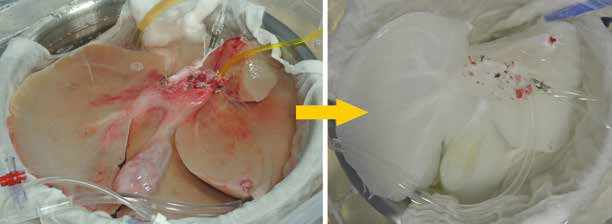Abstract
Repopulation of decellularized tissue with cells is a very promising approach in tissue engineering, with liver tissue engineering not being an exception.
Decellularized liver scaffolds can serve as an excellent 3D environment for recellularization as it maintain tissue-specific microarchitecture
of ECM proteins with important spatial cues for cell adhesion, migration, growth and differentiation. Moreover, by using autologous cells the newly
constructed graft should lack immunogenicity in the host organism and thus eliminate the need for immunosuppressive therapy in the post-transplant
period. This review provides an overview of liver decellularization and repopulation experiments done so far while highlighting the advances
as well as pin-pointing the challenges that remain to be solved.

